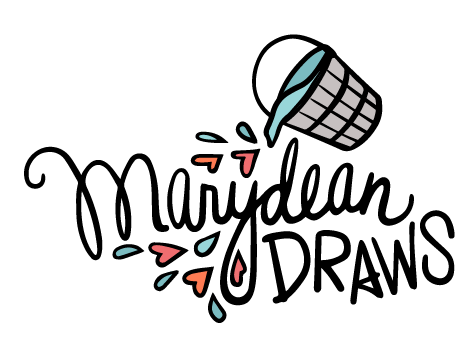

Artwork: Christ and His Disciple on the Road to Emmaus by Henry Ossawa Tanner (in the public domain)
If you’re following me here, you’ll know I’m expanding my series on “Jesus Speaks to Women” to a Bible study (or maybe a few Bible studies). I’m in the process of researching for the studies now, so I’ll be sharing some of the questions I’m exploring with you here on the blog.
In my last post, I laid out the Scriptures about Mary of Bethany and Mary Magdalene and considered whether they might be the same person.
One possibility I mentioned in the last post, and explored by Elizabeth Schrader and Joan Taylor is that “Magdalene” is a title or nickname rather than a reference to Mary’s hometown. The theory is that “Magdalene” may come from the hebrew word “migdal” meaning tower (from the root word “gāḏal,” to make strong), so her name could mean “Mary the tower” rather than “Mary from Magdala” (or maybe even both).
Today, I want to explore if there are other nicknames in the Gospel similar to this, and where the name “Magdalene” might fit into these patterns.
Among Jesus and the twelve disciples we see:
- Jesus of Nazareth and Jesus Christ (Matthew 1:16)
- Jesus gave Simon (from Simeon in Hebrew) the name Peter (or petros or rock in Greek), often called both-–“Simon Peter” (Matt 10:1-4, Matt.16:18, Mark 3:13-19, Luke 6:12-16, 2 Peter 1:1)
- James and John, sons of Zebedee were called Boanerges or “sons of thunder.” Thayer’s Greeek Lexicon says the name “seems to denote fiery and destructive zeal that may be likened to a thunderstorm” (Mark 3:13-19)
- James was called “son of Alpheus” (Luke 6:15, Matt 10:1-4)
- another Simon was called “the zealot” (Mark 3:13-19, Luke 6:15, Matt 10:1-4)
- Judas was called “Judas Iscariot,” according to the Strong’s definition, meaning from Kerioth (Mark 3:13-19, Luke 6:12-16)
- Thomas was known as “Didymus” or “the twin” in Greek (John 11:16, John 20:24, John 21:2)
- the other Judas was called “Judas the son of James”
- Matthew “the tax collector” (Matt 10:1-4)
- John “the disciple whom Jesus loved” (John 21:20)
- Nathanael of Cana (John 21:2)
In other places in the Gospels and the rest of the New Testament
- John the Baptist or baptistēs “baptizer” (Matthew 3:1)
- Joseph of Arimathea (a town, according to Thayer’s Greek Lexicon is a city in Palestine where Samuel was born and lived)
- Lazarus of Bethany (according to Thayer’s, located two miles from Jerusalem at the Mount of Olives)
- Mary “the mother of James and Joseph” (Mark 15:40, 47, Mark 16:1, Luke 24:10, Acts 1:14)
- Simon the Leper (Matthew 26:6, Mark 14:3)
- the prophets Simeon called “Niger,” Latin for “black” and Lucius of Cyrene (Acts 13:1)
- Judas called Barsabas, or “son of Sabas” (Acts 15:22)
- Joseph called Barsabas, who was surnamed Justus (Acts 1:23)
- John also called Mark (Acts 12:12 + 25, Acts 15:37)
- Saul was “also called Paul” (Acts 13:9)
- Philip the evangelist (Acts 21:8) who “had four unmarried daughters who prophesied”
- Alexander the metalworker (2 Timothy 4:14)
- Barnabas “which means son of encouragement” (Acts 4:36)
- Marcus, “sister’s son to Barnabas” (Colossians 4:10)
- Jesus “which is called Justus” (Colossians 4:11)
- Joanna the wife of Chuza (Luke 8:3)
- Mary the wife of Clopas (John 19:24)
I see a few patterns in these nicknames.
Pattern 1: someone was called another name:
“Jesus, who is called Christ” (Matthew 1:15, Matthew 27:17)
“Simon, who is called Peter” (Matthew 10:2)
“Thomas, one of the twelve, called Didymus” (John 20:24)
“Jesus, which is called Justus “(Colossians 4:11)
Saul is called Paul (Acts 13:9)
John called Mark (Acts 15:37)
Pattern 2: People are named for a character trait or something distinguishing about them:
Thomas called Didymus (the twin)
Barnabas, son of encouragement”
Simeon called Niger (black)
James and John, sons of thunder
Simon the leper
the disciple whom Jesus loved
Simon the zealot
Pattern 3: People are named for where they are from:
Joseph of Arimathea
Jesus of Nazareth
Lazarus of Bethany
Judas Iscariot
Nathanael of Cana
Pattern 4: People are named for their relationships to someone else:
James son of Alpheus
Judas son of James
Mary the mother of James and Joseph
Lucius of Cyrene
Judas called Barsabas
Joseph called Barsabas
Marcus, “sister’s son to Barnabas”
Joanna the wife of Chuza
Mary the wife of Clopas
the mother of Zebedee’s sons
Pattern 5: People are named for something they did or were in the past. or a profession they practice:
Simon the leper (seems to be in the past)
Matthew the tax collector (formerly)
Alexander the metalworker
Phililp the evangelist
Alexander the metalworker
John the Baptist
Pattern 6: Some names are two-part, often together without extra prepositions or phrases:
Jesus Christ (the first part is his given name, the second his Messianic title, christos, Messiah, anointed one)
Simon Peter (Simon the Rock)
Judas Iscariot
So how does Mary Magdalene’s name fit in it with these patterns?
She doesn’t seem to fit Pattern 1 since she isn’t called another name.
She could possibly fit Pattern 2 if she is “Mary the tower” and something in her character was seen as strong and secure. I find it interesting that Peter was given the name “Rock,” even in the middle of all his struggles and a major betrayal that lay ahead. Could Mary have a similar story?
She could possibly fit Pattern 3 if Magdala was where was from.
She does not fit Pattern 4 of being named in relationship to someone else.
We don’t have any evidence that she fits Pattern 5 of being named for something she did.
Interestingly, her naming fits with Pattern 6 of the combination of name + title. This pattern does not necessarily exclude the possibility that she is also Mary of Bethany who washed Jesus’ feet. She could have been called only “Mary” in that instance as Simon Peter is only called “Peter” in many instances in the Gospels, and Jesus is not always named “Jesus Christ.”
It seems like some of the naming is done for clarity by the authors, since there are multiple people named Simon, multiple Johns, multiple Mary’s, multiple Judases.
In other cases, it seems the naming has both a clarifying and signifying purpose. In Mary’s case, it could be both.
What do you think? Did anything jump out to you as important or surprising? Did I miss something?

COPYRIGHT/USAGE: All writing, artwork and photos are copyright Marydean Draws. Please do not repost or resell on another website. I’m happy for you to use my coloring pages and other printables for home, school, and ministry. If you share content, please link back to the original post. Thank you!







